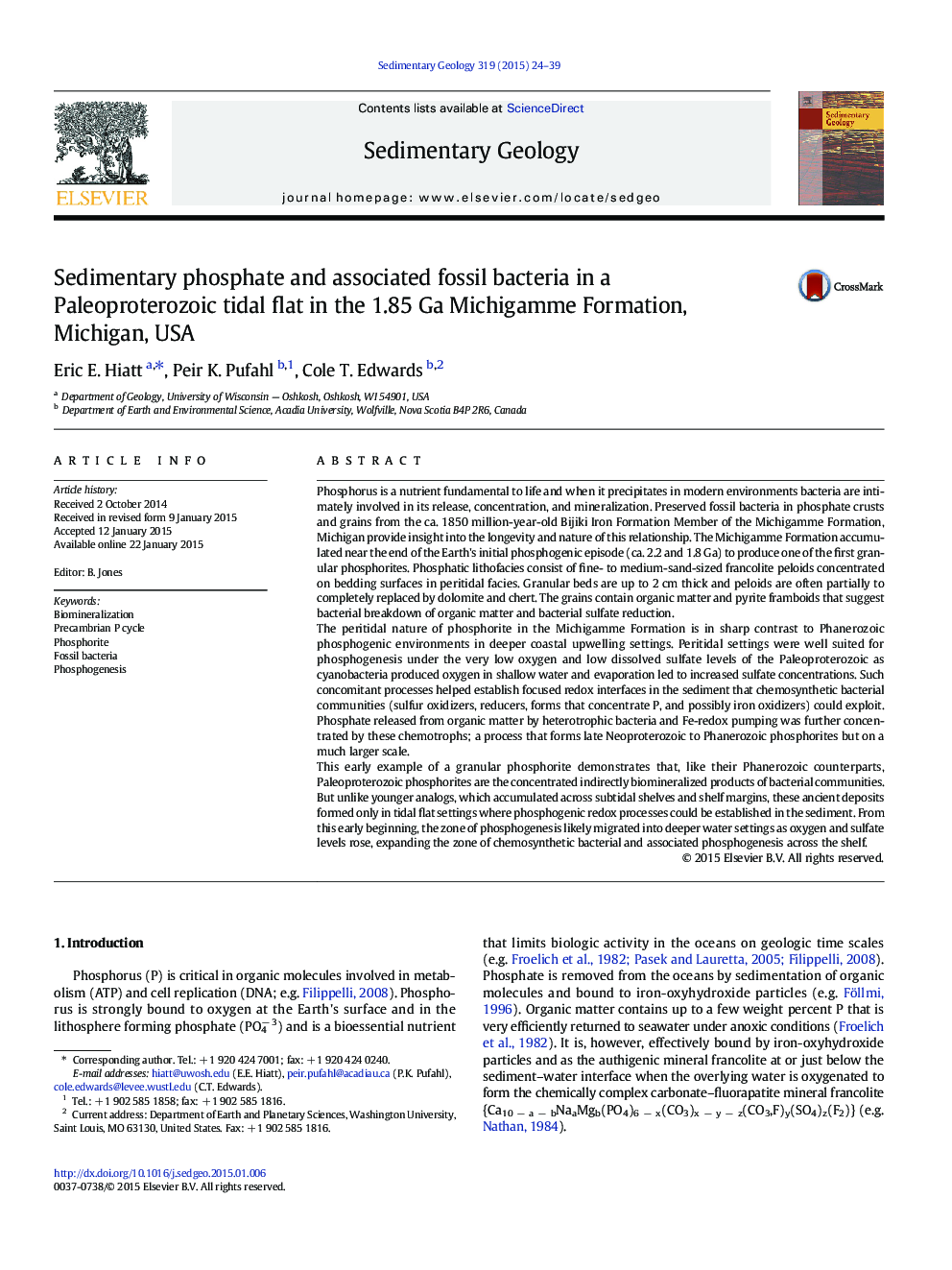| کد مقاله | کد نشریه | سال انتشار | مقاله انگلیسی | نسخه تمام متن |
|---|---|---|---|---|
| 4689318 | 1636044 | 2015 | 16 صفحه PDF | دانلود رایگان |

• Chemosynthetic organisms caused phosphate mineralization.
• Chemosynthetic bacteria create and exploit redox conditions in near-shore settings.
• Phosphate mineralization began in Paleoproterozoic peritidal settings.
• Post-middle Neoproterozoic this microbial-sedimentary system shifted to deep water.
• Francolite is a signpost for early life in Proterozoic marine sedimentary rocks.
Phosphorus is a nutrient fundamental to life and when it precipitates in modern environments bacteria are intimately involved in its release, concentration, and mineralization. Preserved fossil bacteria in phosphate crusts and grains from the ca. 1850 million-year-old Bijiki Iron Formation Member of the Michigamme Formation, Michigan provide insight into the longevity and nature of this relationship. The Michigamme Formation accumulated near the end of the Earth's initial phosphogenic episode (ca. 2.2 and 1.8 Ga) to produce one of the first granular phosphorites. Phosphatic lithofacies consist of fine- to medium-sand-sized francolite peloids concentrated on bedding surfaces in peritidal facies. Granular beds are up to 2 cm thick and peloids are often partially to completely replaced by dolomite and chert. The grains contain organic matter and pyrite framboids that suggest bacterial breakdown of organic matter and bacterial sulfate reduction.The peritidal nature of phosphorite in the Michigamme Formation is in sharp contrast to Phanerozoic phosphogenic environments in deeper coastal upwelling settings. Peritidal settings were well suited for phosphogenesis under the very low oxygen and low dissolved sulfate levels of the Paleoproterozoic as cyanobacteria produced oxygen in shallow water and evaporation led to increased sulfate concentrations. Such concomitant processes helped establish focused redox interfaces in the sediment that chemosynthetic bacterial communities (sulfur oxidizers, reducers, forms that concentrate P, and possibly iron oxidizers) could exploit. Phosphate released from organic matter by heterotrophic bacteria and Fe-redox pumping was further concentrated by these chemotrophs; a process that forms late Neoproterozoic to Phanerozoic phosphorites but on a much larger scale.This early example of a granular phosphorite demonstrates that, like their Phanerozoic counterparts, Paleoproterozoic phosphorites are the concentrated indirectly biomineralized products of bacterial communities. But unlike younger analogs, which accumulated across subtidal shelves and shelf margins, these ancient deposits formed only in tidal flat settings where phosphogenic redox processes could be established in the sediment. From this early beginning, the zone of phosphogenesis likely migrated into deeper water settings as oxygen and sulfate levels rose, expanding the zone of chemosynthetic bacterial and associated phosphogenesis across the shelf.
Figure optionsDownload high-quality image (161 K)Download as PowerPoint slide
Journal: Sedimentary Geology - Volume 319, 15 April 2015, Pages 24–39